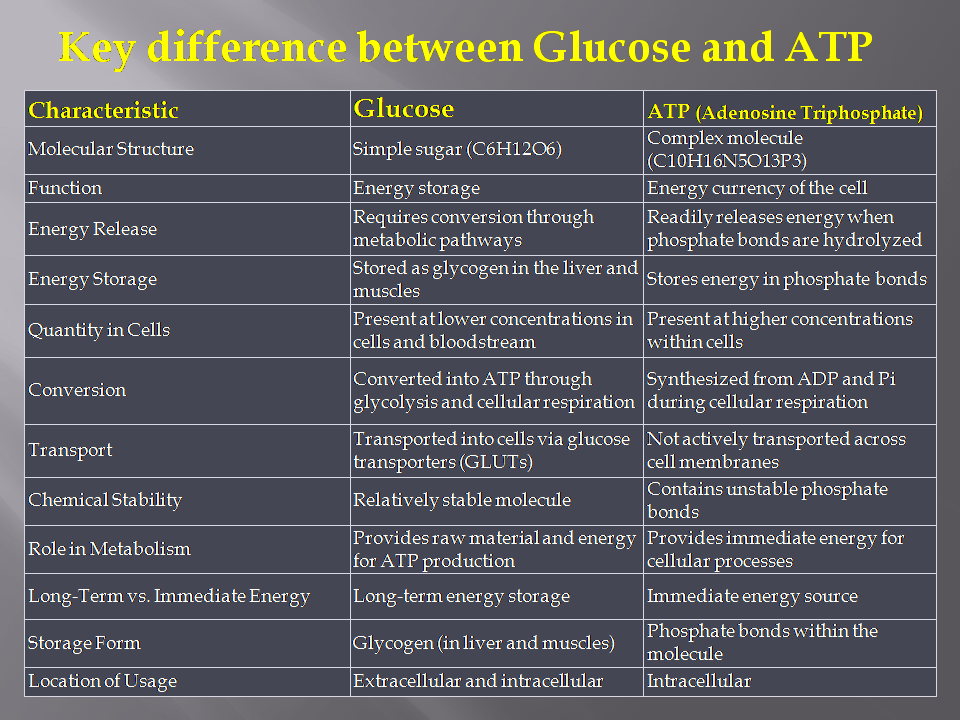Here is the key the difference between glucose and ATP (Adenosine Triphosphate).

Glucose and ATP (adenosine triphosphate) are both important molecules involved in cellular energy metabolism, but they serve different roles and have distinct properties.
Here are the key differences between glucose and ATP:
Molecular Structure difference
- Glucose: Glucose is a simple sugar or monosaccharide with the chemical formula C6H12O6. It consists of a six-carbon ring structure.
- ATP: ATP is a complex molecule composed of three phosphate groups (triphosphate) attached to an adenosine molecule. Its chemical formula is C10H16N5O13P3.
Functional difference
- Glucose: Glucose serves as a primary source of energy for cells. It is metabolized through glycolysis and other pathways to produce ATP, which can be used by cells for various energy-requiring processes.
- ATP: ATP is often referred to as the “energy currency” of the cell. It stores and transfers energy within cells. When the chemical bonds between its phosphate groups are broken, energy is released and can be used for cellular processes.
Energy Storage difference
- Glucose: Glucose is a storage form of energy. When cells have an excess of glucose, it can be converted and stored as glycogen in the liver and muscles for future energy needs.
- ATP: ATP is a more immediate and readily available source of energy. It stores energy in its phosphate bonds and can quickly release that energy when needed by breaking these bonds.
Quantity in Cells difference
- Glucose: Glucose is typically present in the bloodstream and extracellular fluid at relatively low concentrations. Cells take up glucose as needed.
- ATP: ATP is present in cells at higher concentrations, ensuring that there is a readily available supply of energy for cellular processes.
Conversion difference
- Glucose: Glucose is converted into ATP through a series of metabolic pathways, including glycolysis, the citric acid cycle (Krebs cycle), and oxidative phosphorylation in the mitochondria.
- ATP: ATP is synthesized from adenosine diphosphate (ADP) and inorganic phosphate (Pi) during cellular respiration when glucose and other fuel molecules are oxidized.
Transportal difference
- Glucose: Glucose is transported into cells using specific transport proteins, such as glucose transporters (GLUTs) found in cell membranes.
- ATP: ATP is not actively transported across cell membranes like glucose. Instead, it is synthesized and used within the cell where it is produced.
Chemical Stability difference
- Glucose: Glucose is a relatively stable molecule and does not readily release energy in an uncontrolled manner.
- ATP: ATP contains high-energy phosphate bonds that are relatively unstable and can release energy quickly when needed.